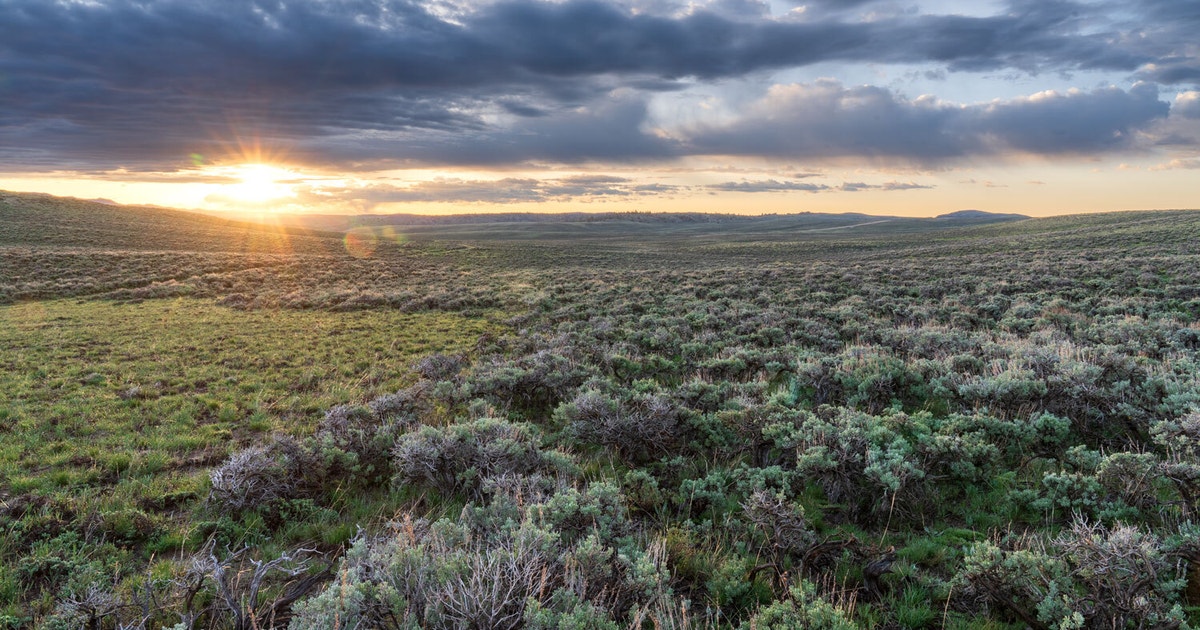When you think of the wild, windswept landscapes of the Western United States, which special place comes to mind?
Most likely, it’s a place like western Wyoming’s Golden Triangle, one of the last, best remaining areas of unfragmented sagebrush in North America. Among the wildlife species featured in this multimedia piece about public lands is the iconic Greater Sage-Grouse, a bird that not only serves as a symbol of the open spaces of the West, but as an indicator of the health of the sagebrush ecosystem itself. Audubon has worked hard alongside members and chapters to ensure that the grouse thrives as a vital part of the landscape.
Unfortunately, populations of the Greater Sage-Grouse and the habitat it relies on have been in steep decline for more than five decades. A 2021 report by the U.S. Geological Survey found that sage-grouse populations have dropped across the West by more than 80 percent since 1965, including a 37 percent decline since 2002. Additionally, scientists found a startling annual loss of 1.3 million acres of functioning sagebrush, about the area of Delaware.
While 11 states are responsible for managing the Greater Sage-Grouse itself, the majority of the birds live on public lands managed by the Bureau of Land Management (BLM). How the BLM manages the sage-grouse’s habitat is very likely to determine the bird’s future.
On March 14, the BLM unveiled a long-awaited draft analysis of proposed resource management plan (RMP) amendments for some 67 million acres of public lands home to the Greater Sage-Grouse. These plans serve as a blueprint for what actions are allowed and not allowed on public lands where sage-grouse are found.
This isn’t the first time that the country’s attention was focused on conserving the Greater Sage-Grouse and its habitat. A bi-partisan group of Western governors, conservationists, hunters and anglers, ranchers and mining and petroleum industry representatives developed a framework that culminated in science-based management plans finalized by the BLM in 2015. This massive undertaking has been referred to as the largest conservation effort in history, all focused on preventing the need to list the species under the Endangered Species Act (ESA). The Trump administration undermined those plans and they were never fully implemented.
Courts intervened and directed the BLM to look again at the Greater Sage-Grouse plans and more carefully consider climate change and the latest science. The range of habitat management actions released by the BLM last month as part of the draft proposed RMP amendments attempts to integrate the research of the last two decades and prioritize conservation so as to staunch the bird’s decline on public lands across ten states.
Through this planning process, the BLM is collecting public comments to evaluate how best to:
-
Integrate the latest science on climate change and Greater Sage-Grouse population needs
-
Balance oil and gas, renewable energy and infrastructure development with the need for healthy, unfragmented habitat
-
Protect the last, best remaining intact sagebrush habitat
Importantly, BLM must stick the landing on this decades-plus planning effort so that attention can refocus on implementation and habitat restoration before it is too late.
The Bureau of Land Management is accepting comments through June 13 and we will be posting an action alert soon so that people can easily participate in the public comment period.

